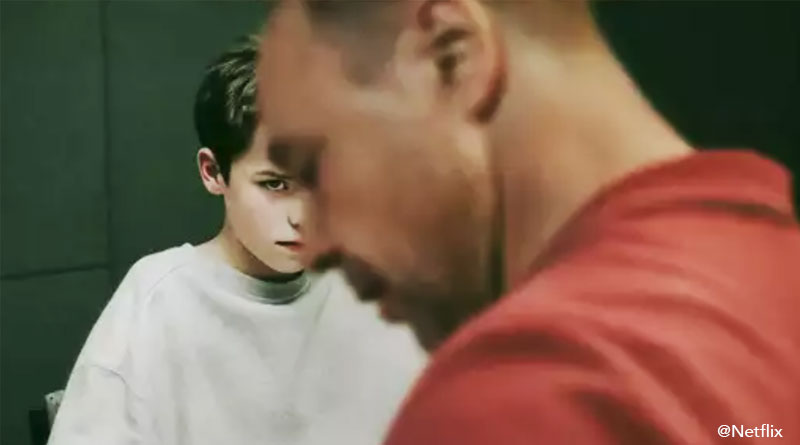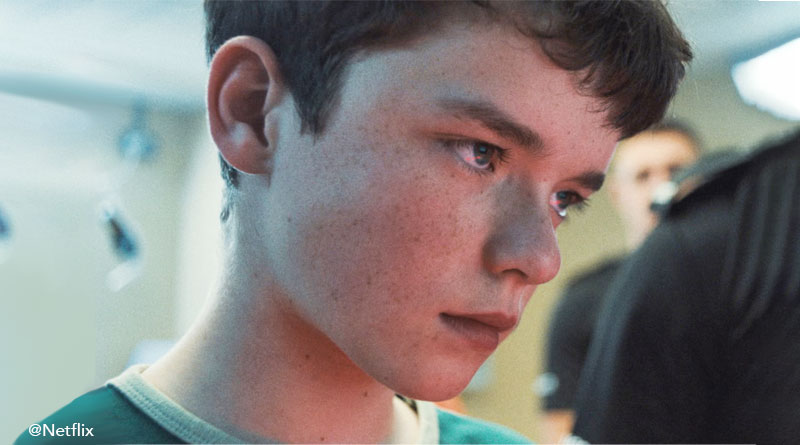The Nuances of ‘Adolescence’: Uncomfortable and Necessary Truths for Parents
The Netflix miniseries shows how disconnected parents are from teenagers’ trends, interests, and communication styles.
By: Diana Bello Aristizábal
One 13-year-old boy. Accused of murder. Son of working middle-class parents. These are the three premises that viewers of the Netflix miniseries see in its first episode, which reveals a first nuance: what follows is more chilling than finding out whether Jamie Miller, the main character, is guilty or not.
‘Adolescence’ isn’t just a miniseries about crime, bullying, or social media, even though it uses those three elements as its backdrop. Rather, it’s a raw and profound universal portrait of teenagers.
That depth in its narrative is what has prompted so many parents to talk about what it’s like to raise a teenager, even more so when Jamie’s parents, Eddie and Manda Miller, look back on their mistakes with complete honesty and humility.
They bravely analyzed their parenting work despite their son being accused of murder, and this could be taken as an invitation for the rest of us to do the same, because although the story itself is fictional, it’s based on many real-life cases.
The Adolescent-Adult Gap and Male Rage
When it comes to looking inward, the first impulse is to point the finger at the outside world. In this story, the easiest, though not the most accurate, approach would be to blame social media for Jamie’s disturbed state, as he spent a significant amount of time locked in his room behind a screen. That would be a reductionist view.

“What the series shows is how disconnected adults are from teenagers’ trends, interests, and communication styles. Although this gap is common to all times because throughout history, teenagers have felt their parents don’t get them, with the digital world, there seems to be a greater distance,” says Dr. Beatriz Martínez Núñez, a child and adolescent psychiatrist.
This is evident in the miniseries when Adam, the teenage son of the police officer investigating the murder, gives his father a lecture on emojis, who before then had interpreted an Instagram conversation between two teenagers as friendly.
Emojis in conversations are part of the secret code of today’s teenagers, who hide troubling behaviors and ideologies in adults’ sight. For instance, the red pill emoji refers to ‘seeing the truth’ and is associated with misogyny, so when someone posts it, they are saying they’ve woken up and no longer believe in equality.
Meanwhile, the dynamite emoji alludes to a violent act. If the dynamite and red pill are put together, the message the sender is trying to convey is that the recipient is part of the ‘incel’ culture, which is defined as a group of ‘involuntarily celibate’ men who fail to arouse the interest of the opposite sex. Understanding these concepts and ideas can be very useful when addressing parenting.
In this regard, Dr. Martínez says that social media algorithms show users content that aligns with their beliefs. In Jamie’s case, his self-image was so distorted, to the point of seeing himself as unsuccessful with girls, that he fell prey to a movement known as the ‘manosphere,’ comprised of websites, blogs, and online forums that promote toxic masculinity laced with misogyny.

But this concept wasn’t born in the digital age. “There’s a strong perception that social media is harming teenagers and intensifying male violence, and while that’s true, there are many expressions of violent masculinity that didn’t begin on the internet, such as cage fighting and other popular sports that are considered entertaining and exciting,” reflects anthropologist Claire Oueslati-Porter.
In this sense, society has placed certain models of masculinity on a pedestal that tend to be dominant and derogatory toward women, and that promote unhealthy competitiveness among men over who can conquer the most women and achieve the most goals. This puts enormous pressure on young brains.
“If this was a matter of getting kids off their phones, the problem would be easy to solve, but it’s not that simple because sexism and misogyny are embedded in society. Something similar happened in the 1970s and 1980s when it was said that children’s minds were being ruined by the hours spent in front of a TV, so I wonder if this isn’t the latest technology we’re blaming for a problem (patriarchal violence) that started before it,” says Oueslati-Porter.
It’s important to understand that patriarchal violence not only affects women, but also has a toll on men, victims of a system that has told them anger is part of their nature, when it’s actually a social construct.
The belief that being a man means expressing emotions from a place of rage and focusing on achievements is perfectly portrayed in Eddie Miller, who ignores the bad example he’s set for his son with his angry outbursts, which have even led him to hit objects.
He is also unaware of the damage he has caused Jamie by being obsessed with making him meet his expectations. His disappointed expression and aloof stare after a soccer match in which Jamie failed to score left a mark on him that, ultimately, undermined his self-esteem.
At this point, the story becomes difficult to digest as despite everything, Eddie isn’t violent in the way we usually see on screen because he’s not narcissistic, nor does he beat his wife or children, nor is he a psychological abuser. In fact, he has quite a stable relationship with Manda and loves Jamie. So, what happened? Aren’t unquestionable dysfunctional families the ones who experience situations like Jamie’s?
 “If you’ve had a violent father figure who hit you with a belt, perhaps you learn not to go from zero to one hundred, but, instead, to gradually open the release valve with mild moments of rage, but without descending into pure violence. He even tells his wife that he has repressed himself many times,” explains Dr. Martínez about Eddie, a former child-victim of physical abuse.
“If you’ve had a violent father figure who hit you with a belt, perhaps you learn not to go from zero to one hundred, but, instead, to gradually open the release valve with mild moments of rage, but without descending into pure violence. He even tells his wife that he has repressed himself many times,” explains Dr. Martínez about Eddie, a former child-victim of physical abuse.
Therefore, the remaining lesson is that parents shouldn’t compensate their children for the demons they carry inside, but rather heal them, since even controlled anger can wreak havoc. “If you feel the wound from the past is too deep, I encourage you to seek out a psychotherapeutic space where you can learn a healthy model that doesn’t involve getting angry but repressing yourself.”
An additional piece of advice is that while social media isn’t the root of the problem, it’s not a good idea for teens to have free rein to use it without restrictions or schedules, or to access it in unsupervised spaces. It fosters isolation, linked to various mental health issues.
In Jamie’s case, his parents worked so many hours that technology was his only source of validation, and when there wasn’t space for him in it, he was left without tools to deal with his emotions. It is because of this that the final recommendation is to never allow busyness to create such a distance that we stop keeping tabs of our children and their inner world.

